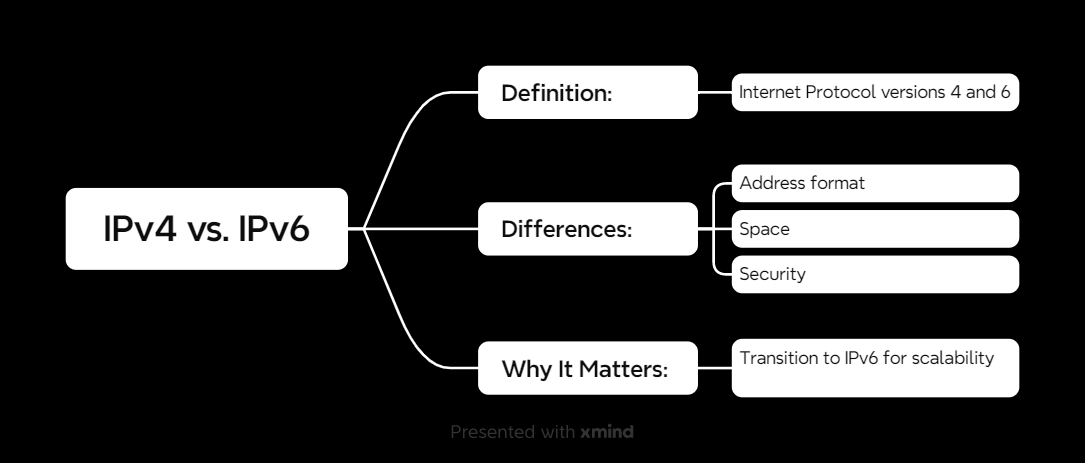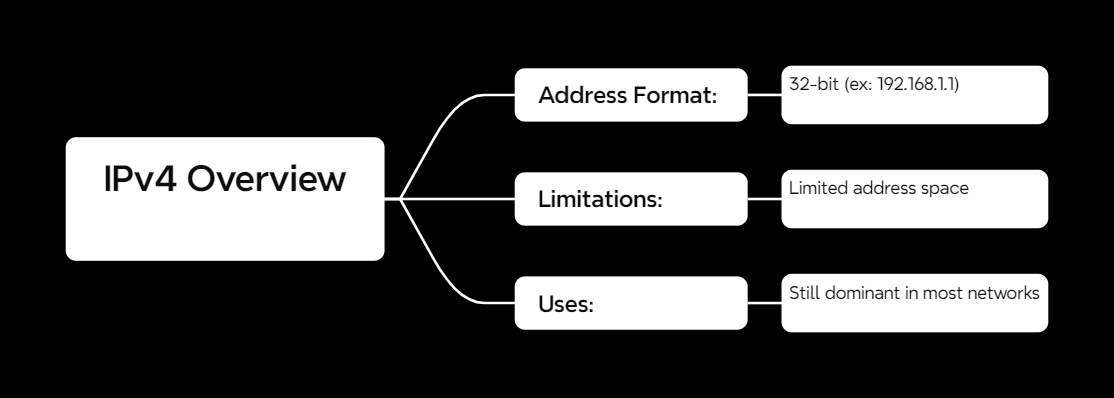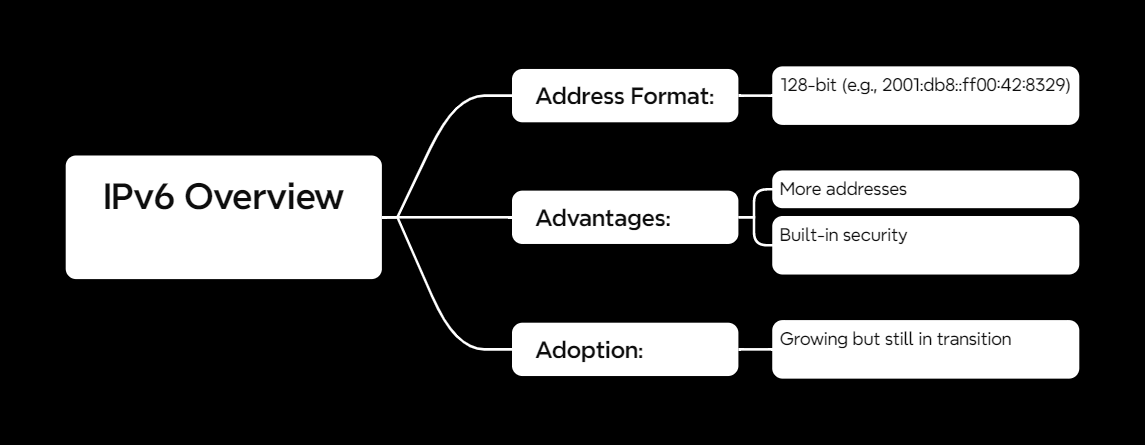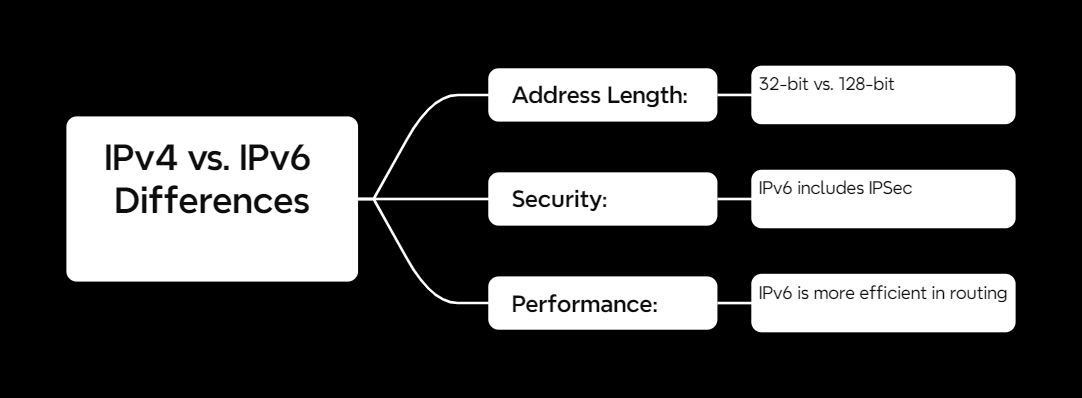Ever wondered why we need IPv6 when IPv4 seems to be working just fine? Well, let’s break it down in a way that actually makes sense.
What Is an IP Address?
Before diving into IPv4 vs. IPv6, let’s get one thing straight: an IP address is like a home address for devices on a network. It allows computers, routers, and servers to find and communicate with each other.
Now, there are two major versions: IPv4 and IPv6.
IPv4: The Old Reliable
IPv4 (Internet Protocol version 4) has been around since the early days of the internet. Here’s what you need to know:
1. Address Format
- IPv4 uses 32-bit addresses, written as four decimal numbers separated by dots.
- Example:
192.168.1.1
2. Address Space
- There are about 4.3 billion possible addresses. Sounds like a lot? Not really. We ran out.
3. Usage
- Despite its limitations, IPv4 is still the most widely used IP protocol.
- To keep it going, we use workarounds like NAT (Network Address Translation) to stretch the available addresses.
IPv6: The Future of the Internet
With more devices connecting to the internet every day, IPv4 just doesn’t cut it anymore. That’s why we have IPv6, which fixes many of IPv4’s problems.
1. Address Format
- IPv6 uses 128-bit addresses, written as hexadecimal numbers separated by colons.
- Example:
2001:db8::ff00:42:8329
2. Virtually Unlimited Addresses
- IPv6 supports 340 undecillion addresses (that’s 340 trillion trillion trillion).
- Every device can have a unique public IP—no need for NAT!
3. Built-in Security
- IPv6 includes IPSec, a security feature that encrypts and authenticates traffic.
- In contrast, IPv4 relies on optional add-ons for security.
Key Differences Between IPv4 and IPv6
Here’s a quick comparison of IPv4 and IPv6:
| Feature | IPv4 | IPv6 |
|---|---|---|
| Address Size | 32-bit | 128-bit |
| Address Example | 192.168.1.1 | 2001:db8::ff00:42:8329 |
| Total Addresses | 4.3 billion | 340 undecillion |
| Security | Optional (IPSec not required) | Built-in IPSec |
| NAT Required? | Yes | No (every device gets a unique IP) |
| Performance | Slower due to NAT | Faster and more efficient |
Why Hasn’t IPv6 Fully Replaced IPv4 Yet?
Even though IPv6 is better in almost every way, the transition is slow because:
- Compatibility Issues: Many older devices don’t support IPv6.
- Cost: Upgrading an entire network to IPv6 isn’t cheap.
- Dual Stack Approach: Most networks run both IPv4 and IPv6 to ensure compatibility.



